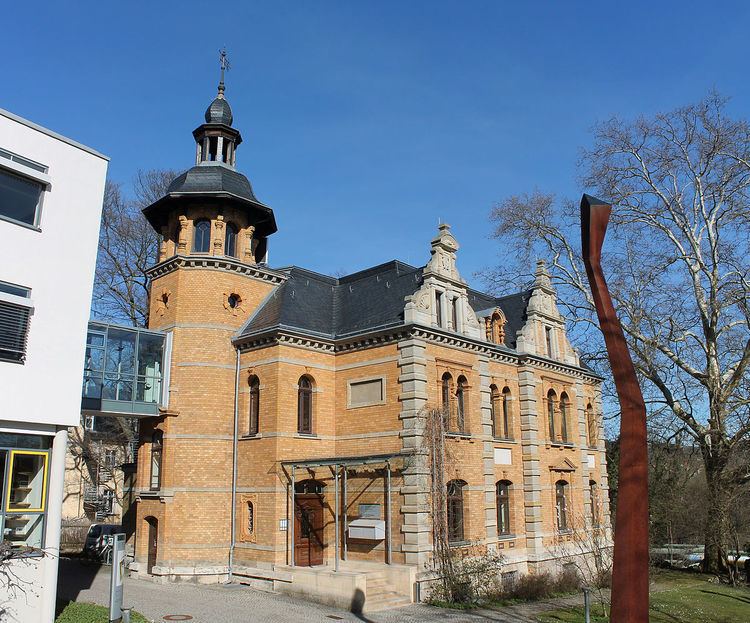Abbreviation SHH Headquarters Jena, Germany Parent organization Max Planck Society | Type Scientific institute Phone +49 3641 6865 Founded 1993 | |
 | ||
Formation 1993; 24 years ago (1993) Purpose Research in archaeogenetics, evolutionary linguistics and archaeology Key people Johannes Krause (co-founder)
Russell Gray (co-founder) Nicole Boivin Address Kahlaische Str. 10, 07745 Jena, Germany Hours Closed now Wednesday8:30AM–5PMThursday8:30AM–5PMFriday8:30AM–4PMSaturdayClosedSundayClosedMonday8:30AM–5PMTuesday8:30AM–5PM Similar Max Planck Institute for Chemical, Max‑Plan für Biogeoch, Ernst‑Abb Jena, Hans Knöll Institute, Leibniz‑In für Alters‑ forschung | ||
Max planck institute for the science of human history
The Max Planck Institute for the Science of Human History (German: Max-Planck-Institut für Menschheitsgeschichte) performs basic research into archaeogenetics and linguistic cultural evolution. The institute is one of 80+ research institutes of the Max Planck Society and is located in Jena, Germany.
Contents
- Max planck institute for the science of human history
- Max Planck Institute of Economics
- Present day
- Location
- References
The co-directors of the institute are:
Max Planck Institute of Economics
The predecessor of the present institute was founded in 1993 as the Max Planck Institute for Research into Economic Systems (Max-Planck-Institut zur Erforschung von Wirtschaftssystemen) and later renamed the Max Planck Institute of Economics (Max-Planck-Institut für Ökonomik). Its initial mission was researching the transition of the former Eastern European socialist economic systems, but it later researched a broad set of problems relating to change in modern economies more generally, including evolutionary economics, experimental economics, and entrepreneurial studies.
It was organized into three research units:
Present-day
On March 2014, the institute was renamed the Max Planck Institute for History and the Sciences. A few months later, on November 21, 2014, the Institute of Economics was realigned and renamed to the Max Planck Institute for the Science of Human History.
Location
The institute is located on Kahlaische Strasse, about 1 km south-east of the city centre. It is housed in an attractively restored Victorian villa, linked by a glass bridge to a much larger modern building, which includes offices and other facilities for each of the research units, each unit having one floor of the main section of the building. In addition the new buildings include a substantial library, and apartments where visitors to the institute can be accommodated.
